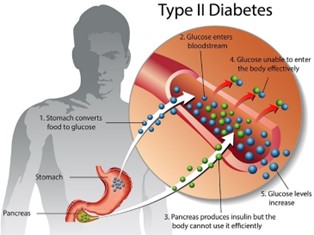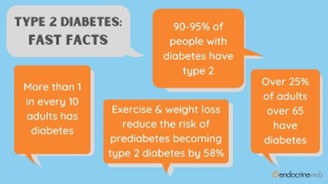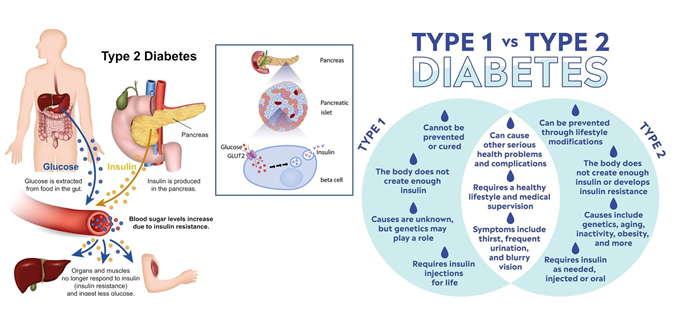Mr. G was newly diagnosed with type 2 Diabetes Mellitus, he asks the nurse what "type 2” means in relation to diabetes. The nurse to the patient that type 2 diabetes differs from type 1 diabetes in that with type 2 diabetes:
The patient is totally dependent on an outside source of insulin.
The insulin precursor that is secreted by the pancreas is not activated by the liver.
There is decreased insulin secretion and cellular resistance to insulin that is produced.
The immune system destroys the pancreatic insulin-producing cells.
The Correct Answer is C
Type 2 diabetes mellitus is a metabolic disorder characterized by high blood sugar levels resulting from decreased insulin secretion and/or increased insulin resistance. In type 2 diabetes, the body's cells become resistant to insulin, which is a hormone that helps regulate blood sugar levels by allowing glucose to enter cells for energy. As a result, the pancreas produces more insulin to compensate for the increased demand, but over time, the pancreas may not be able to keep up, and blood sugar levels rise.
Unlike type 1 diabetes, which is an autoimmune disorder in which the body's immune system destroys the insulin-producing cells in the pancreas, people with type 2 diabetes still produce insulin, but their body is not able to use it effectively. Therefore, type 2 diabetes can be managed through lifestyle changes, such as diet and exercise, and/or medication, such as oral hypoglycemic agents or insulin therapy.
Nursing Test Bank
Naxlex Comprehensive Predictor Exams
Related Questions
Correct Answer is A
Explanation
The first step in the education plan should be to assess their understanding and perception of the disease. This will help the nurse to identify any misconceptions or knowledge gaps that the patient may have and tailor the education plan accordingly. Understanding the patient's perceptions will also help the nurse to establish a trusting relationship with the patient and increase their engagement in diabetes self-management.
Options b, c, and d are important components of the diabetes education plan, but they should be implemented after the initial assessment of the patient's perception and understanding of their diagnosis.


Correct Answer is C
Explanation
Before administering any medication, the nurse should confirm the potassium level to ensure that it is still elevated and needs to be treated. Potassium levels can fluctuate, so repeating the test will ensure that the client receives the appropriate treatment.
Options (a) Withhold the medication and (b) Administering a hypertonic solution may be appropriate interventions depending on the client's condition, but confirming the potassium level is the first step.
Option (d) Monitoring for paresthesia is important but not the first action that the nurse should take.
Whether you are a student looking to ace your exams or a practicing nurse seeking to enhance your expertise , our nursing education contents will empower you with the confidence and competence to make a difference in the lives of patients and become a respected leader in the healthcare field.
Visit Naxlex, invest in your future and unlock endless possibilities with our unparalleled nursing education contents today
Report Wrong Answer on the Current Question
Do you disagree with the answer? If yes, what is your expected answer? Explain.
Kindly be descriptive with the issue you are facing.

